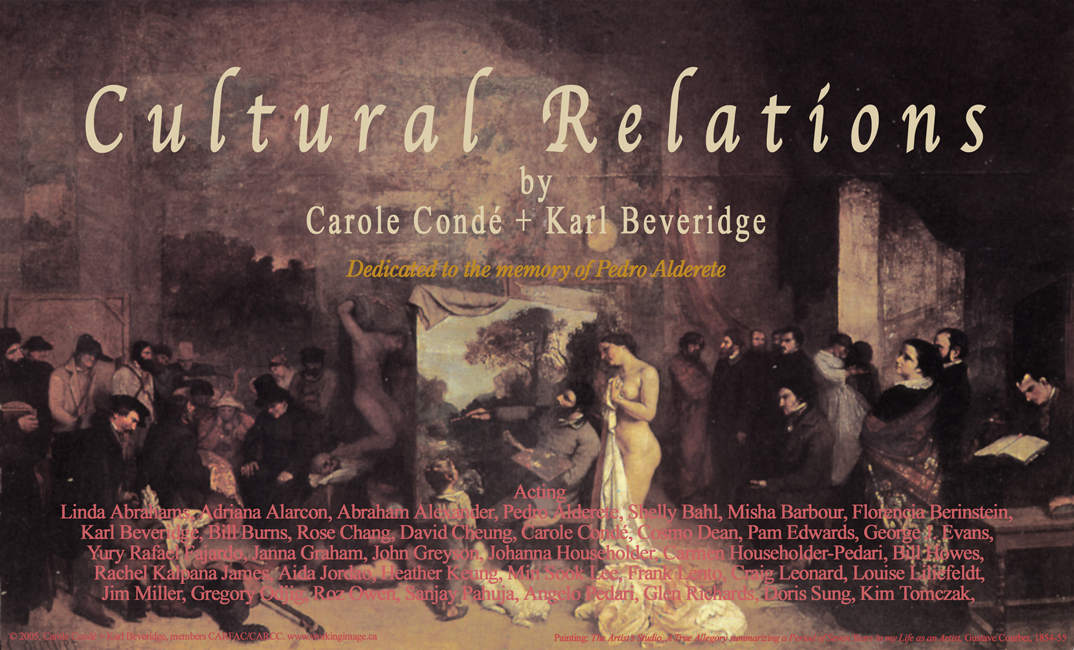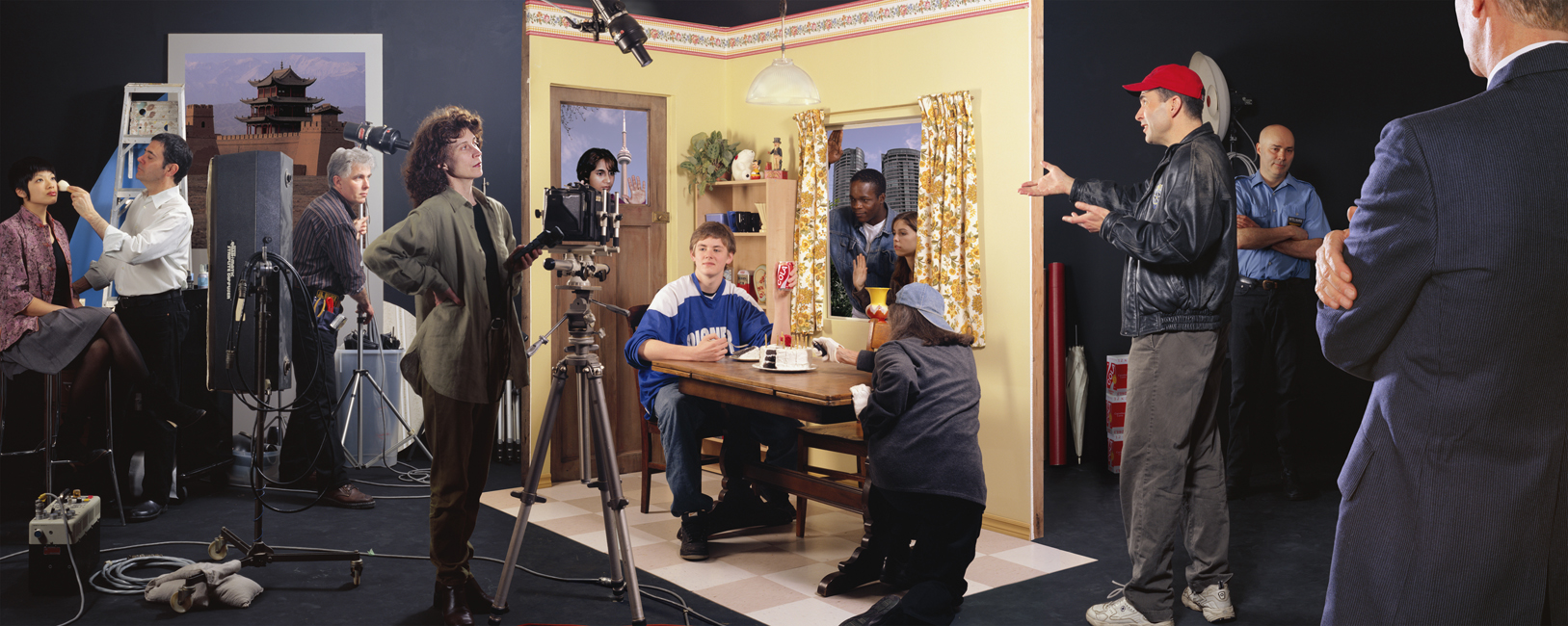Cultural Relations (2005) a four part photographic series that depicts four sites of cultural production: commercial, artistic, amateur and community. The series is loosely based on Gustave Courbet’s painting The Artist’s Studio of 1854-55.
Each image contains a central internal set that is the end product of production. Each internal set refers to cola – from an ad, an artwork of a ‘destroyed’ ad, a snapshot in a cola plant, to a community production on the assassination of a cola worker in Latin America. The relations of production involved in creating the central image flank both sides of the internal set.
While historically many artists have painted self-portraits, very few have extended that examination out into the studio and the social relations that inform their work. Courbet’s painting is one of the few exceptions, and acknowledges the presence and influence of other artists, intellectuals, as well as ‘ordinary folk’, on his life and work. While Courbet (and his model) are the centre and focus of his work, implying an individualist authorship, Condé and Beveridge attempted to portray a more collective, although hierarchical, problematic, and more complex portrayal of cultural production today.
As Courbet’s work is particular to France, and possibly Europe, in the mid 19th century, Condé and Beveridge’s project is particular to Canada, and possibly the US, at this time. A more global portrayal would undoubtedly reveal other more severe contradictions.





